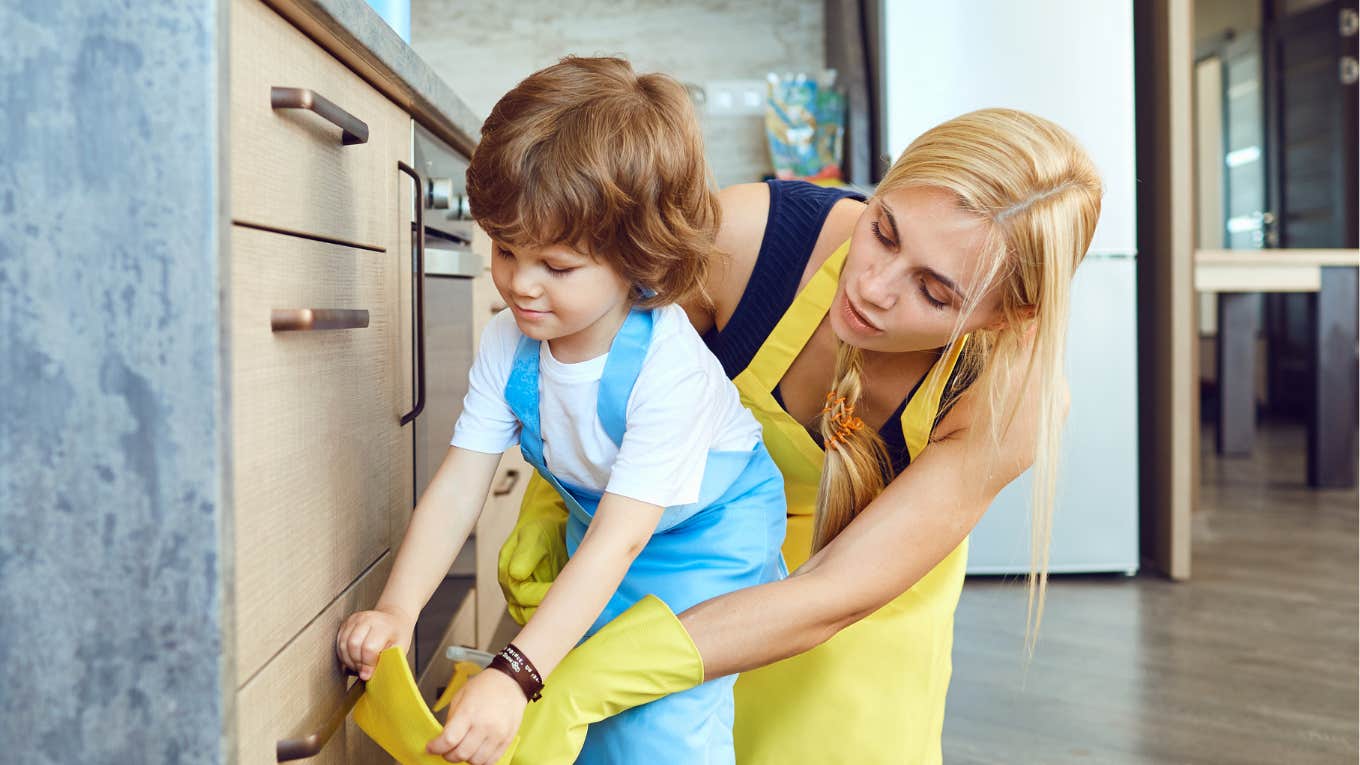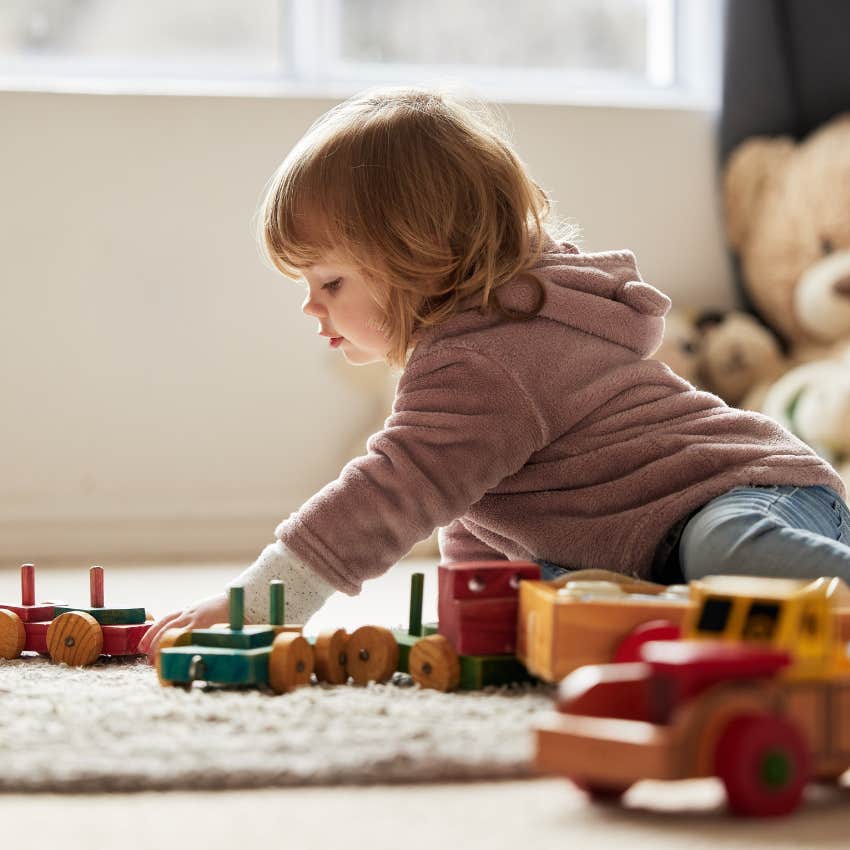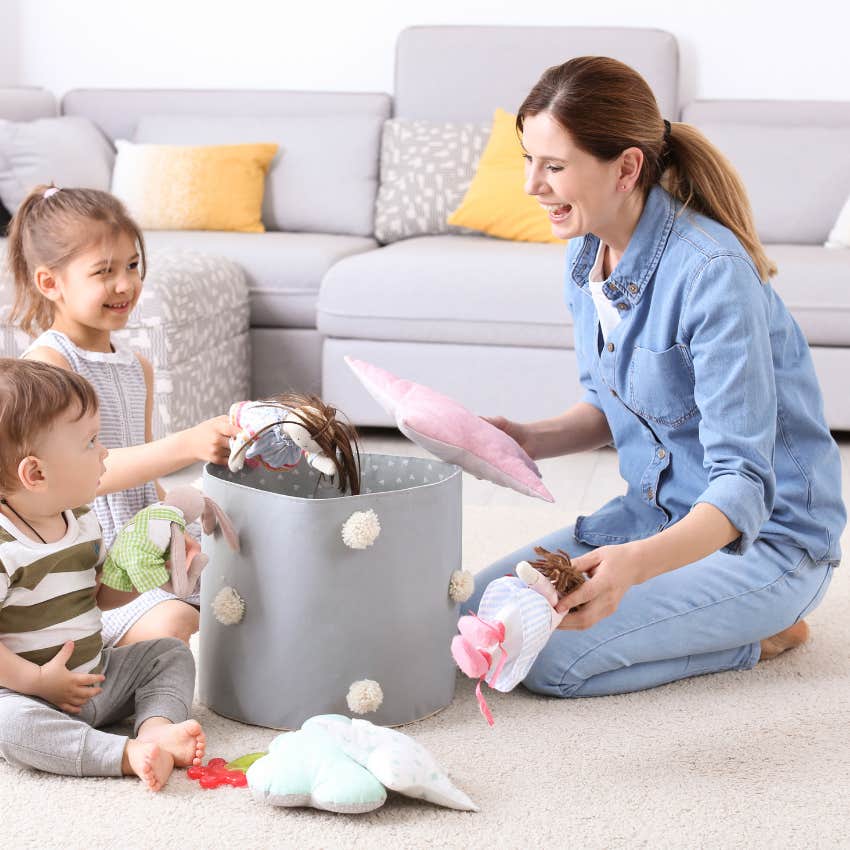Parents Who Do These 4 Things Raise Tidy Kids Who Clean Up Their Own Messes, Says Professional Organizer
Raising kids who actually pick up after themselves doesn't just happen.
 Maxwell Gold | Unsplash
Maxwell Gold | Unsplash When you have one or more children, it's necessary to teach them how to clean and declutter. They have toys. It’s a fact of life.
The sooner you can teach them how to control toy clutter, the better it will be for your home. You will spend less time reminding your child to pick up their toys and, at the same time, you're teaching them to be responsible for their belongings, which is a lifelong skill.
When you make controlling toy clutter fun, it’s a win for both you and your child. When your child is very small, they have little interest in toys. Plus, the toys are manageable. You can probably fit most of them in a basket.
But, as we all know, time flies. Before too long, your child will have books, stuffed animals, puzzles, building blocks, and other toys to control. If you don’t have a system for teaching your children how to clean up their toys, they will merge and become toy clutter.
Teach your child how to declutter by having a place for them to put their toys. Let them know that, in a perfect world, before you get out another toy, you put the one you were playing with away.
Realistically, this will only happen if you are playing a game or doing a craft with them, and if you initiate putting everything away before getting out the next toy or game.
Parents who do these four things raise tidy kids who clean up their own messes:
1. Label things with pictures
It’s easiest to put things away when there are clearly identifiable places to put the toys. Label the toy bins by category and use picture labels combined with the word "label."
Labeling with pictures and words makes it easy for your child to put away their toys. It also makes it easy for their friends or a babysitter to help pick up and put away. Use clear bins, boxes, or crates.
Research confirms that using visual aids, such as picture labels for toys, can improve children's ability to learn and follow routines, fostering organization, responsibility, and skills like planning and categorization. These strategies provide clear instructions that help children understand the 'why' behind cleaning, which leads to increased independence and a better sense of accomplishment.
2. Limit the games
 PeopleImages / Shutterstock
PeopleImages / Shutterstock
Limit the number of games you have available to them. If all the games are always out on the toy shelf, the choice can be overwhelming. Control toy clutter and limit the number of games available to two or three.
Rotate the games and bring different ones onto the shelf every couple of weeks. This keeps the selection fresh and avoids the overwhelm.
Doing this also reduces the chance that game pieces will get mixed in together causing confusion and frustration. It’s hard to put games away when there are too many out.
Having access to fewer toys enhances children's cognitive and neurological development, according to the findings of a study conducted by the University of Toledo. When kids have fewer toys, they develop longer attention spans, become resourceful, learn how to work with others, develop stronger social skills, and take care of what they have.
3. Play games
Make picking up toys a game. Control toy clutter by playing the seek and sort game. Ask your child to pick up all the blocks and put them away. When they've done that, pick another category of toy for them to seek and put away.
When you ask your child to focus on only one category of things at a time, you're teaching categorization. You can play a favorite sing-along song on your phone and ask your child to put as many books as they can before the song is over.
Toss the stuffed animals onto the chair where they belong, into a basket, or into a net hammock near the ceiling. Remember, this is supposed to be fun. Fun for your child and fun for you to teach them this valuable life skill. Accept their effort as excellent!
Resist the urge to go back in and correct the way they have put their things away until after your child has gone to bed. If you correct their efforts in front of them, they will get the message that what they are doing is not good enough and stop trying.
Research supports using games for clean-up tasks because play fosters skills like self-control, cognitive development, and problem-solving in children. By turning cleaning into an engaging, structured activity, parents can turn a mundane chore more enjoyable, teaching responsibility in a positive, less confrontational way.
4. Make putting toys away a routine
 New Africa / Shutterstock
New Africa / Shutterstock
Make controlling toy clutter part of every day. When it's simply part of a routine, it will not be a struggle. As often as possible, incorporate a little game using seek-and-sort or music to make the picking up fun.
Now and then, reward your child for doing a good job picking up their toys with a special treat. In the book Suzie’s Messy Room, Suzie gets to go to the ice-cream parlor with her mom as a special treat. In Benji’s Messy Room, Benji gets to invite a friend to an indoor playground as a reward. Who among us doesn’t like a reward?
There are many different storage ideas out there to use for putting toys away. How you control the toy clutter in your home will depend on the space available. Make the task fun for you and your child by providing them with easy-to-use and maintain toy storage.
Diane N. Quintana is a Certified Professional Organizer in Chronic Disorganization, and Master Trainer, and the owner of DNQ Solutions, LLC.

